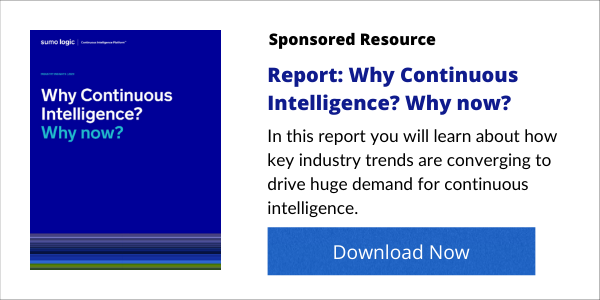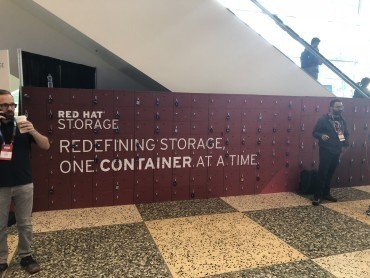
After a year of accelerated digital transformation and movement to the cloud, there are no more excuses not to be adopting cloud technology for your fraud detection strategies.
The myriad societal and economic obstacles arising over the past year have exposed opportunities for improvement across every industry. For those in financial services tasked with fraud prevention and risk reduction have had to face the challenge of tackling fraud that tends to rise during times of economic decline and uncertainty.

The past year has also seen an acceleration in digital transformation and technological adoption – for both financial institutions and the bad actors seeking to defraud them. In 2021, there has never been a more important time for financial institutions to be rethinking their technology to remain safe and competitive. Fraud rings are continuously growing in shape and size, and your fraud detection application needs to accommodate this highly dynamic and emerging environment.
See also: AI Brings Real-Time to Fraud Detection and Prevention
The current state of fraud detection
The financial world currently finds itself in interesting circumstances at the crossroads of multiple landscape changes. Most immediately, the combination of health and financial distress caused by the current pandemic is making people more vulnerable and has created fertile ground for fraud. The rapid shift to online commerce amid stay-at-home orders has brought newer and more people online, permanently changing behaviors. With this new way of conducting business, consumers are adopting new digital payment environments. All these changes to consumer behavior have created a perfect storm for fraud and increased the need for banks to strengthen their security posture.
At the same time, technological innovations have made fraudsters’ tools super sophisticated. Financial institutions are finding the need to stay many steps ahead more and more pressing if they want any chance of catching fraud and reducing risk. Fully meeting this pressing need is made more difficult, however, by the many layers of regulations. These factors make adopting more sophisticated technology than the fraud rings even more important.
And banks can’t turn to their usual solutions for quick fixes. Traditional models based on behavior patterns have been permanently disrupted by COVID, and there is a need to fill in newly created gaps with real-time, predictive, and intent-based options. Companies need highly adaptable data models and data systems that are capable of unlocking unknown insights.
Turning to cloud-based solutions
With these changing circumstances, fraud detection and anti-money laundering efforts have reached a turning point where the most efficient solutions aren’t just nice to have but essential for success. We’re increasingly seeing the key to that efficiency lies in the cloud. Much like businesses in every other industry, financial services have long striven to improve their agility while reducing cost and lowering their risks. Cloud provides a way to deliver services in a way that meets these criteria and overcomes the aforementioned challenges without adding the additional struggle of having to worry about the underlying hardware. This move to the cloud has made it easier to consume services, removing the need to take the time to learn yet another process. Cloud has made using modern, intelligent technologies quick to get started with and quick to get to results.

While offering new possibilities, the real benefit to financial services of adopting cloud technology right now is how much moving to the cloud can amplify the successes of existing technology. Take the use of knowledge graphs, for example. Knowledge graphs that enabled investigators to see relationships between data points, visualize those relationships, and quickly and efficiently query data played a vital role in last year’s blockbuster investigation, the FinCEN Files. Using knowledge graphs, investigators were able to expose a vast network of industrial-scale money laundering running through Western banks.
The potential for risk management and fraud detection using knowledge graphs grows exponentially when that technology is deployed in the cloud. These data and graphs become a lot easier to work within the cloud, as you have more control over managing the right tools from a globally accessible location while teams are increasingly distributed. AML software company Lucinity offers a good example of the benefits to be reaped in by deploying in the cloud: their technology has been working eight times faster than legacy systems and finding 12 times as many cases of money laundering just by taking advantage of the cloud to reduce false positives more quickly and accurately.
See Also: Continuous Intelligence Insights
In addition to amplifying the power of technology, the freedom the cloud provides can also speed up processes, which is especially important in a time-sensitive endeavor like risk management. Moving these processes to the cloud has cut down both the time and manpower these processes take. For example, Dun & Bradstreet was facing regulations that called for investigations that required highly skilled staff and was hard to scale, significantly slowing down the operation and losing revenue. Adopting cloud solutions allowed for data to be surfaced for an individual in milliseconds, helping the team quickly understand relationships between data so they could rapidly meet regulatory requirements.
What financial institutions can learn from these use cases
Looking to these examples of successful use of cloud technology at scale, there is a lot to learn and implement into your own fraud detection efforts as you move to the cloud. A few that I think are most vital for fully taking advantage of the opportunities cloud presents:
- Train for cloud expertise at every level. There is a huge shortage of expertise in cloud technology relative to the demand. Financial services need to focus on building those skills across their entire organization. This goes beyond knowing how to run these technologies, too. Practitioners need to know how to design and run them the right way – with a focus on cost and efficiency.
- Focus on technologies that are secure and trustworthy. Cloud-based technologies built specifically to handle the security concerns of cloud deployment make it simpler for organizations to improve security and meet their compliance requirements. This will allow you to secure your organization’s most sensitive data worry-free. After all, if your fraud detection efforts aren’t built on a safe foundation, how can you expect safety and risk reduction as a result?
- Maximize efficiency. Cloud fundamentally makes it easier to aggregate data across diverse and distributed sources, providing richer context, advanced AI, and hence actionable and predictive insights. Efficiency should be a top priority in both choosing the services you’ll be consuming on the cloud and in how you are training your team to use these tools.
- Remain flexible to an ever-changing environment. The infinite capacity of cloud services and the ability to scale on-demand offers the flexibility to meet the demands of your solution during any situation. This may mean that new services or processes become a better fit for your needs in the future. When your organization is comfortable in the cloud, it will be less painless to adjust to current circumstances or new tools rather than sticking with “how it’s always been done.”
Conclusion
After a year of accelerated digital transformation and movement to the cloud, there are no more excuses not to be adopting cloud technology for your fraud detection strategies. Financial institutions that call it good once they’ve migrated to the cloud without taking advantage of the technology made available to them are missing out on key insights and intelligence they could not get otherwise. Embracing modern analytics and innovations will be key to staying ahead of well-equipped fraudsters – because as we’re repeatedly reminded – the only constant is change.







